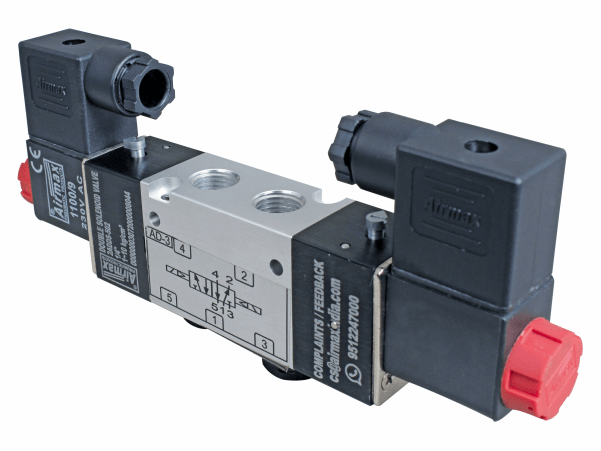Directional control valves are essential components in hydraulic and pneumatic systems, allowing operators to manage the flow of fluids effectively. With various types available, selecting the right valve depends on specific application needs. This blog post explores the different types of directional control valves, their actuation methods, and how to choose the right one for your requirements.
Understanding Directional Control Valves
Controlling the direction of fluid flow within a system is the purpose of directional control valves, or DCVs. Their ability to start, stop, and redirect fluid makes them essential to the functioning of hydraulic motors and cylinders. The primary functions of directional control valve are include controlling the flow path, isolating circuit branches, and allowing for the venting of relief valves.
Key Characteristics of Directional Control Valves
1. Number of Ports: DCVs can be classified based on the number of ports they have, such as two-way, three-way, or four-way valves.
2. Switching Positions: The number of distinct flow paths a valve can provide is also a critical factor. Two-, three-, and four-position valve layouts are frequently used.
3. Actuation Mechanism: Valves can be actuated manually, electrically, mechanically, or hydraulically, depending on the application requirements.
Types of Directional Control Valves
Based on Construction
1. Spool Valves: These valves utilize a sliding or rotary spool to direct fluid flow. They are versatile and can be designed for multiple positions.
2. Poppet Valves: Featuring a ball or piston that moves on and off a seat, poppet valves are typically used for on/off control.
3. Ball Valves: These valves use a rotating ball to control fluid flow, providing a reliable sealing mechanism.
Based on Number of Ports
– Two-Way Valves: These valves allow fluid to flow in one of two directions and are often used for simple on/off control.
– Three-Way Valves: Commonly used for controlling single-acting actuators, these valves can direct fluid to either the actuator or back to the tank.
– Four-Way Valves: Essential for controlling double-acting actuators, four-way valves can manage bidirectional fluid flow, making them ideal for applications requiring more complex movements.
Based on Actuation Method
1. Manual Actuation: Operated by levers or knobs, manual valves are straightforward and reliable for applications where automation is not necessary.
2. Solenoid Actuation: These valves use electromagnetic solenoids for remote control, making them suitable for automated systems.
3. Hydraulic Actuation: Utilizing hydraulic pressure for actuation, these valves offer smooth and precise control, ideal for heavy-duty applications.
4. Pneumatic Actuation: Similar to hydraulic actuation but using air pressure, pneumatic valves are often employed in lighter applications.
Choosing the Right Directional Control Valve
Selecting the appropriate DCV involves considering several factors:
Application Requirements
Determine the particular requirements for your application, including the pressure levels, necessary flow rate, and kind of fluid to be controlled (liquid or gas).
System Configuration
Evaluate whether a series, parallel, or combination circuit design is necessary for your system. Series configurations allow for step-by-step control, while parallel designs enable simultaneous control of multiple actuators.
Maintenance and Longevity
Consider the maintenance requirements of the valve. Regular inspection and adherence to manufacturer guidelines can significantly extend the operational life of directional control valves.
Cost and Availability
Finally, assess the cost-effectiveness and availability of the valve types you are considering. Some valves may offer advanced features but come at a higher price point.
Conclusion
Directional control valves play a pivotal role in the efficiency and functionality of hydraulic and pneumatic systems. By understanding the various types of DCVs and their applications, you can make an informed decision that aligns with your operational needs. Whether you require a simple manual valve or a complex solenoid-operated system, the right directional control valve can enhance performance and reliability in your applications.
 :
https://www.airmaxindia.com/
:
https://www.airmaxindia.com/












